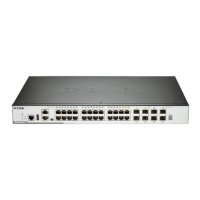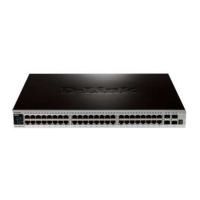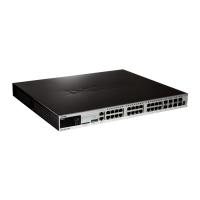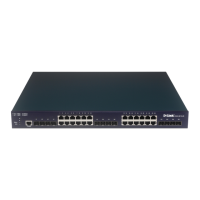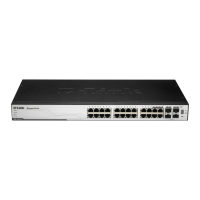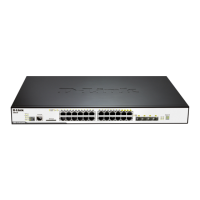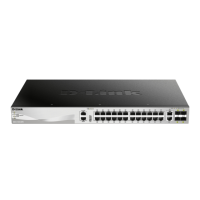DGS-3630 Series Layer 3 Stackable Managed Switch Web UI Reference Guide
37
Parameter Description
• Login Local requires the user to enter a username and a password to
access the specified application.
Click the Apply button to accept the changes made.
The fields that can be configured in Login Password are described below:
Parameter Description
Application
Select the application that will be configured here. Options to choose from are
Console, Telnet and SSH.
Password Type
Select the password encryption type that will be used here. Options to choose
from are Plain Text, Encrypted, and Encrypted-MD5.
Password
Enter the password for the selected application here. This password will be used
when the Login Method for the specified application is set as Login. In the plain-
text form, the password can be up to 32 characters long, is case-sensitive, and
can contain spaces. In the encrypted form, the password must be 35 bytes long
and is case-sensitive. In the encrypted MD5 form, the password must be 31 bytes
long and is case-sensitive.
Click the Apply button to accept the changes made.
Click the Delete button to remove the password from the specified application.
SNMP
Simple Network Management Protocol (SNMP) is an OSI Layer 7 (Application Layer) designed specifically for
managing and monitoring network devices. SNMP enables network management stations to read and modify the
settings of gateways, routers, switches, and other network devices. Use SNMP to configure system features, monitor
performance, and detect potential problems with the Switch, switch group, or network.
Managed devices that support SNMP include software (referred to as an agent) which runs locally on the device. A
defined set of variables (managed objects) is maintained by the SNMP agent and used to manage the device. These
objects are defined in a Management Information Base (MIB), which provides a standard presentation of the
information controlled by the on-board SNMP agent. SNMP defines both the format of the MIB specifications and the
protocol used to access this information over the network.
The Switch supports the SNMP versions 1, 2c, and 3. The three versions of SNMP vary in the level of security
provided between the management station and the network device.
In SNMPv1 and SNMPv2c, user authentication is accomplished using ‘community strings’, which function like
passwords. The remote user SNMP application and the Switch SNMP must use the same community string. SNMP
packets from any station that has not been authenticated are ignored (dropped). The default community strings for the
Switch used for SNMPv1 and SNMPv2c management access are:
• public - Allows authorized management stations to retrieve MIB objects.
• private - Allows authorized management stations to retrieve and modify MIB objects.
The SNMPv3 protocol uses a more sophisticated authentication process that is separated into two parts. The first part
maintains a list of users and their attributes that are allowed to act as SNMP managers. The second part describes
what each user in that list can do as an SNMP manager. The SNMPv3 protocol also provides an additional layer of
security that can be used to encrypt SNMP messages.
The Switch allows groups of users to be listed and configured with a shared set of privileges. The SNMP version may
also be set for a listed group of SNMP managers. Thus, you may create a group of SNMP managers that are allowed
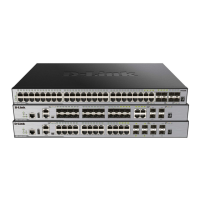
